The technologies that improve lives in the world’s underserved communities are born as prototypes that evolve through testing and tinkering in workshops, laboratories and garages. We polled our network of engineering experts in search of the next important products in global development. Each of their recommendations is designed to meet a basic need in the world’s underserved communities. And each has the potential to someday change people’s lives around the world. These are promising prototypes to watch in the year ahead.
Elegant Subsidized Housing for Mexico’s Indigenous
The humanitarian architectural firm Comunal suffered a blow to its first foray into the construction of subsidized housing for economically disadvantaged indigenous people in the state of Puebla. Working alongside the Totonac indigenous people of the rural village of Tepetzintan, located in the Sierra Norte roughly between Mexico City and Veracruz, the firm built a stunning home of bamboo and stone. The design was meant as a prototype for a line of homes that could be built from local resources by local craftspeople. But the federal government had a different idea. Mexico’s National Housing Commission (CONAVI) announced that it would no longer subsidize structures built with some traditional materials, including bamboo. The intent was to reduce damage to the natural environment when home-builders gathered timber for construction.
In response, Comunal changed course. The firm designed a structure based in materials found throughout Mexican construction, cement block walls and corrugated zinc roof panels. But the new concept also incorporated a touch of imported bamboo, in the walls and roofs. The walls are prefabricated panels coated with mortar and ixtle, a local plant fiber. The wood and ixtle lend a traditional feel to a building that meets national standards for subsidy. As a result, this prototypical home oozes elegance, but it was easy to build in less than a week and costs little.
For more on Comunal
Online: comunaltaller.com
E4C’s Solutions Library: Comunal: Taller de Arquitectura Social Housing Production
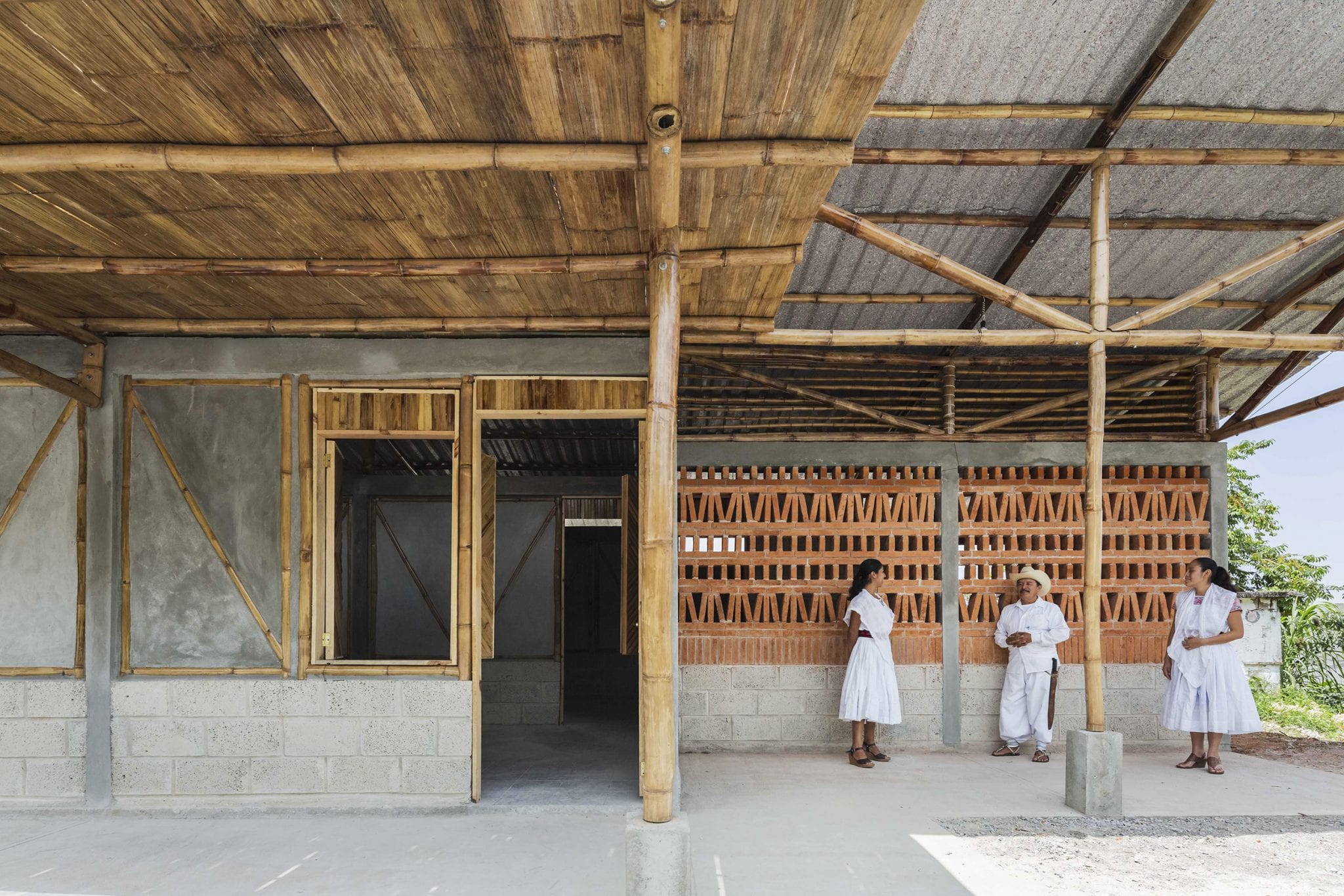
Basins that Encourage Kids to Wash Their Hands
If design can entice school children to wash their hands, the folks at Splash may soon figure out what works. In partnership with the Autodesk Foundation, the social enterprise has begun the mass manufacture of these plastic basins designed to encourage handwashing. At least, that is the hope. Ongoing studies, one funded by USAID in Addis Ababa, Ethiopia, may reveal what works and what should change.
“One of the key things you’ll notice first off is the shape,” says Nick Ellington, WASH (WAter, Sanitation and Hygiene) Infrastructure Manager at Splash. “It doesn’t really look like a normal sink. From the top down it’s more triangular. We did that to encourage that the kids would not be staring at a wall, that they’d interact and see each other.”
The rationale came from a UNICEF recommendation to make a group activity out of handwashing in schools, which may increase the time that kids wash their hands. Splash’s basins also include built-in soap trays, which may be a simple way to trigger behavior change, Mr. Ellington says. Mirrors behind the basins may also promote better handwashing. Through a small study in schools in Kathmandu, Nepal, Splash found that mirrors may double the rate of handwashing.
The enterprise is now studying the effects of its basins and hygiene-education efforts Addis Ababa. The results, expected later this year, should help answer questions about the affect of design on kids’ behavior.
For more on Splash
Online: splash.org
E4C’s News: Coming soon

Tryptophan-Like Fluorescence (TLF), a Rapid Screen for Fecal Contamination in Groundwater
Tryptophan-like fluorescence (TLF)is an approach to water assessment that has been pioneered by the British Geological Survey and partners across Africa. An estimated 1.8 million people globally drink water contaminated with fecal matter, a leading cause of diarrheal diseases. Diarrheal diseases are a leading cause of death for children under five years old. The United Nations’ Sustainable Development Goal 6 (SDG6) calls for universal access to safe drinking water. Groundwater is a major source of drinking water globally. In many regions it is the only source of drinking water in the dry season, and fecal contamination of groundwater remains a major concern.
There is now a strong evidence base for the suitability of TLF for assessing the risk of fecal contamination in groundwater.
TLF is a quicker and easier way of measuring groundwater contamination because it can be done using an electronic probe on site, rather than having to take samples to a laboratory. This makes it quicker for regulators and water supply operators to identify contamination and take action. This is particularly important in low- and middle-income countries where laboratory testing is slow and expensive, and data collection on groundwater quality is often non-existent. Research of the last couple of years has been focusing on finding out how accurate TLF is, but a challenge that remains is the relatively high cost of the sensor equipment. In 2019 the approach should become ready for more widespread use.
A briefing note from BGS is in preparation, in the meantime, the most recent research paper can be found at sciencedirect.com.
– By Sean Furey, Contributing Editor at Engineering for Change and Director of the Rural Water Supply Network (RWSN) Secretariat at Skat Foundation in St. Gallen, Switzerland
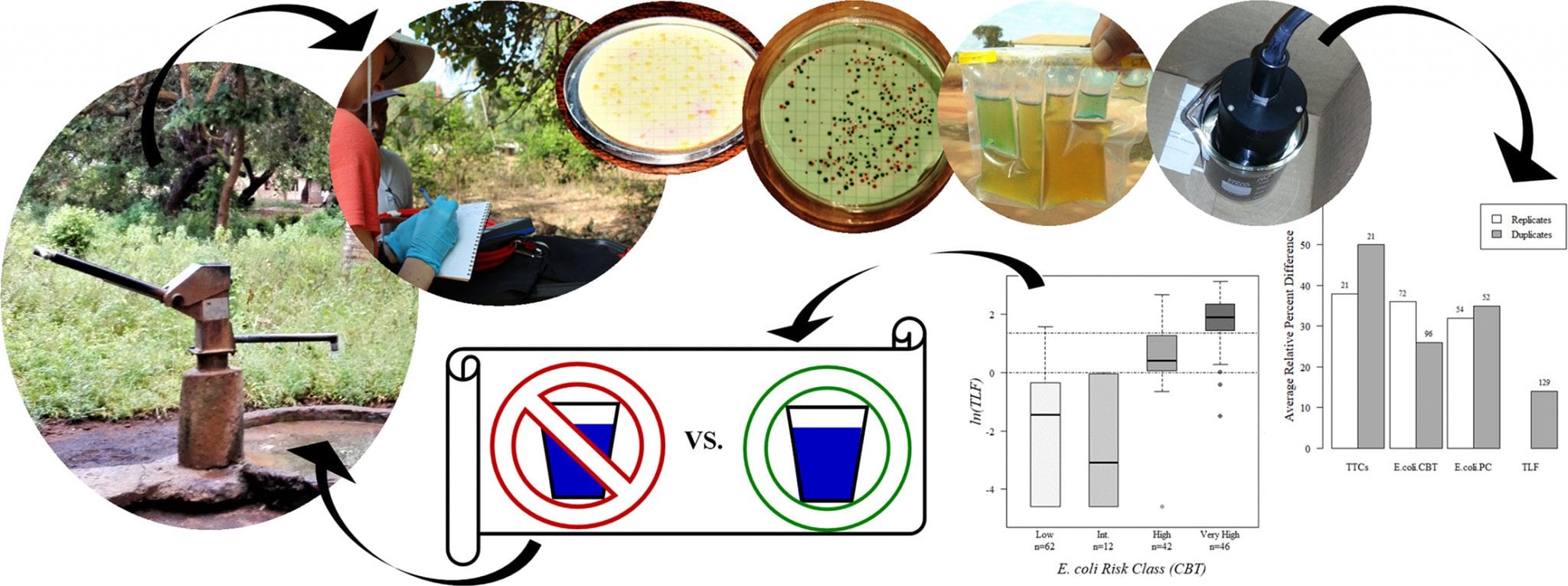
“Smart” Handpump Sensors for Monitoring Water Points
Several research groups and non-governmental organizations have been working on smart handpump technologies that monitor handpump use by water users in real time. A key advantage of this concept is that it allows for the remote detection of failures quickly so that repair teams can make timely repairs to keep the community water point operational. In 2019 we will see this technology reach maturity as extensive piloting work yields published results. Most notably the work of Oxford University in Kenya, Ethiopia and Bangladesh through the UK-funded research programs UPGro (Unlocking the Potential of Groundwater for the Poor) and REACH: Improving Water Security for the Poor.
Among the unexpected findings from this technology is that when the data set was digitally processed, the numbers revealed a relationship between the handpump handle movement and the groundwater level in the borehole. If this is borne out by further research, then it has the potential for turning handpumps into groundwater monitoring stations. That could be a real gamer changer for water resources and drought management across data-poor Sub-Saharan Africa. The high-definition monitoring of handpump use has also allowed better understanding of water user behavior in rural Kenya, where it was noted that rainfall events reduced handpump use for a day or so.
A noteworthy example of a prototypical handpump sensor is in development now at the New York-based non-profit charity: water. The IMII sensor measures water flow rates in an India Mark II, the world’s most widely used handpump, then transmits data it collects over the GSM mobile network. It does not require an initial set-up; it is automatically awakened by the water flow. Once activated, the sensor transmits the GPS coordinates of the water point and merges them with the sensor ID for further accountability. The system is designed to save power and enables the battery to last 10 years. The prototype is in testing and production is expected to start by the end of 2019, says Mario Milanesi, Director of Water Sensors at charity: water.
“The IMII sensor is the third generation of the remote monitoring devices that charity: water has invented since 2012 to ensure that clean water continues to flow at charity: water projects around the world. By last year charity: water is also providing support to governments, NGOs and the private sector in installing the sensors and testing their compatibility to the national monitoring frameworks in place,” Mr. Milanesi says.
For more on handpump sensors
Online:
Colchester, F. E., Marais H. G., Thomson P., Hope, R., Clifton D. A. (2017) Accidental infrastructure for groundwater monitoring in Africa, Environmental Modelling & Software91 (2017) 241 – 250
Thomson, P.; Bradley D,; Katilu; Katuva J.; Lanzonia, M.; Koehler J.; Hope, R. Rainfall and groundwater use in rural Kenya, Science of The Total Environment, Volume 649, 1 February 2019, Pages 722-730
For more on the IMII sensor
Online: charitywater.org
-By Sean Furey and Rob Goodier
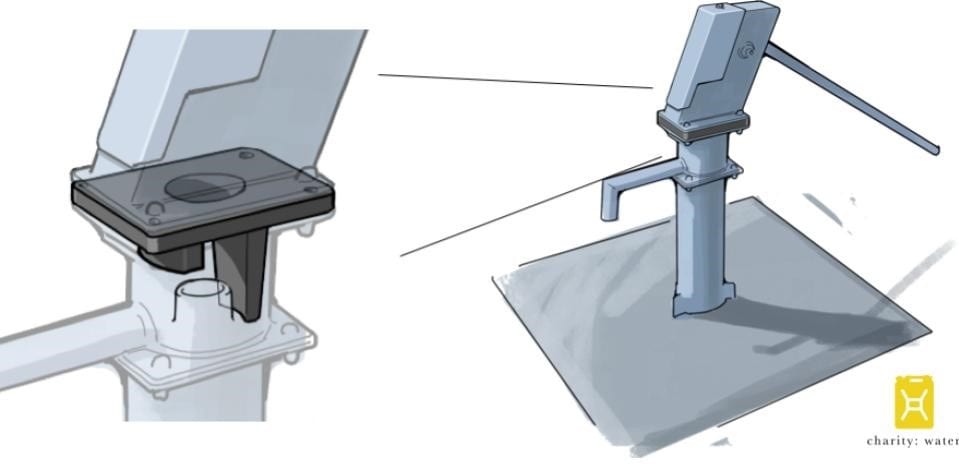
Nyumbani Interlocking Bricks Turn Plastic Waste into Homes
Interlocking bricks made from plastic waste and sand could soon build homes in a Kenyan slum. A team from the Netherlands, Kenya and the United States formed the Metabolic Foundation and are developing a Lego-like brick that is fireproof, affordable and sustainable.
The foundation plans to build a plastic brick facility as a social business in Viwandani, Nairobi. The team is raising capital through a crowdfunder at Indiegogo.
“As a first pilot, we will construct a demonstration site using plastic bricks to showcase the possibilities of constructing with this material to the community and future customers,” The Metabolic team writes in the project description. “Our technique addresses both the problem of an ever-growing stream of plastic waste and the need for cheap and safe building materials in slums.”
The project looks promising, says Jason Moses, Contributing Editor at Engineering for Change and Founder of Common Thread, a social enterprise that supports community-based organizations in the world’s slums.
“We’ve seen many interlocking brick solutions, but this one uses plastic waste and sand,” Mr. Moses says.
More on Metabolic Foundation
Online: metabolicfoundation.nl
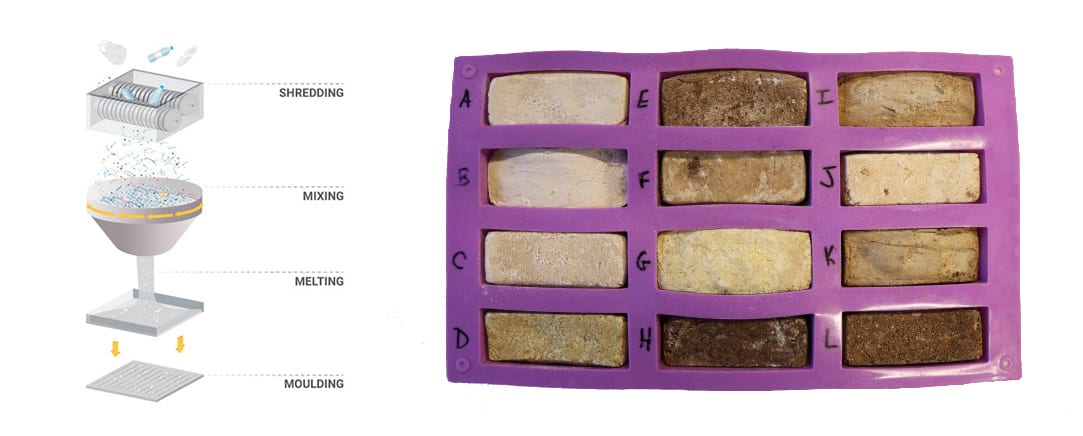
REGMAX Cleans Up the Stainless Steel Industry
Stainless steel can be a toxic business. During its production, the steel undergoes a process called pickling, in which it is bathed in a mixture of nitric and hydrofluoric acids. After use, the acids are neutralized into a sludge and treated and disposed as industrial waste. It’s not just a little waste. The global steel industry uses 300,000 liters of acid every hour.
Sustainable Technology Solutions (SUSTEC), an Austria-based startup, is testing a cleaner method to handle the pickling acids. The venture is reluctant to release details while putting finishing touches on its first prototype. The gist, however, is that SUSTEC ‘s process REGMAX can recover waste acid, reuse some and convert the rest into usable metal oxides.
“The technology has the potential to remove all the waste generated in the stainless steel industry, since we can create a closed loop of materials,” says Fabian Storek, Founder and Managing Partner at SUSTEC. “The waste is turned into resources.”
The new process confers environmental benefits by eliminating waste, and economic benefits by reducing the need to buy new acids and other materials. And there may be other applications outside of the steel industry.
“The tech is applicable for mining applications, where acid is being used today,” Mr. Storek says.
For now, the first prototype is in its final phase. and another, larger prototype will begin development later this year.
“We consider our selves to be market ready Q2 2019 for smaller scales and larger scales from 2020,” Mr. Storek says.
For more on REGMAX
Online: sustec.at
E4C’s News: A Prototypical Waste Reycling Process Could Clean Up the Steel Industry
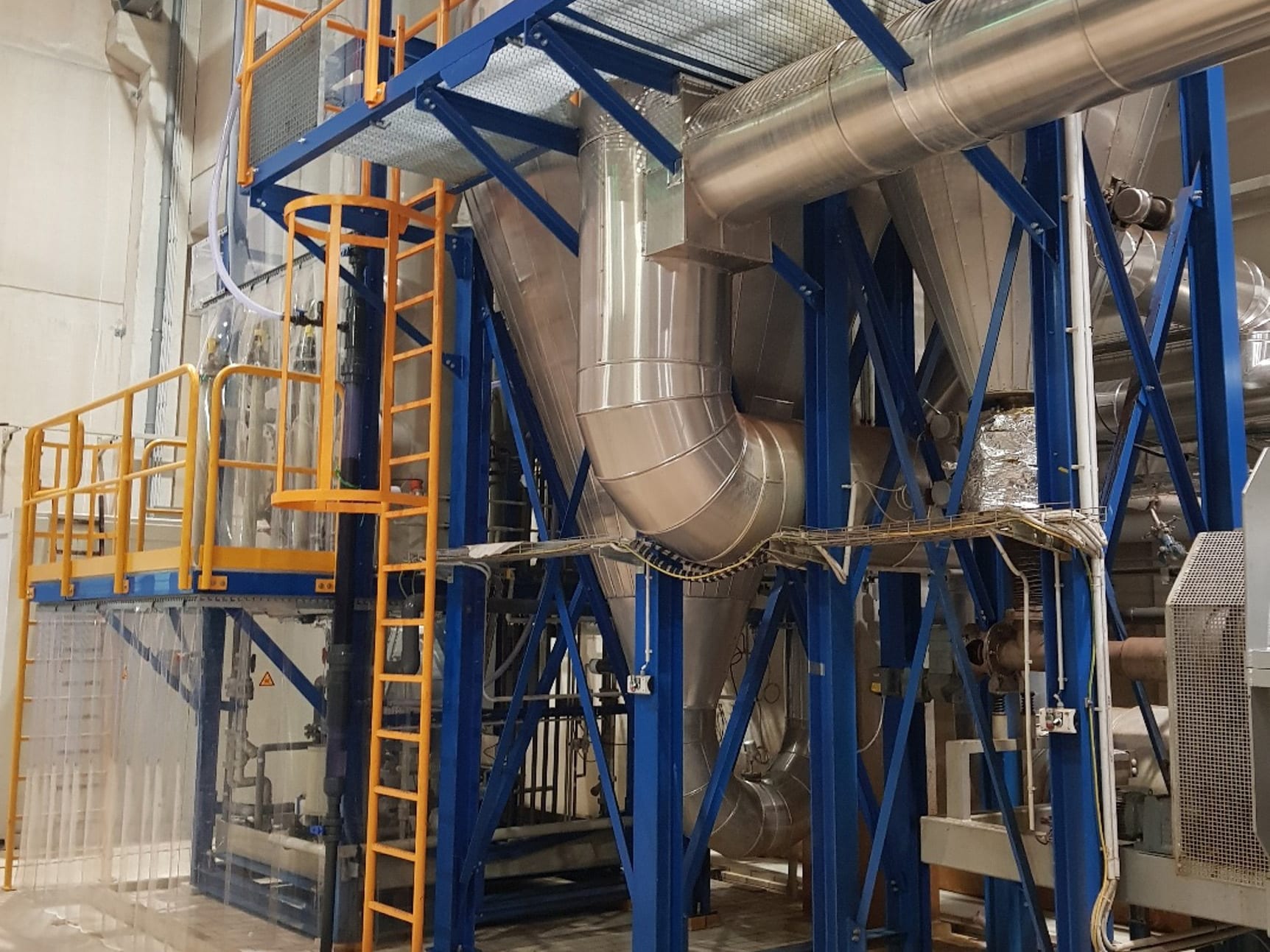
SUSTEC’s pilot plant was finished in early 2019.
Nowlight, Off-Grid Power from the Reimagined GravityLight
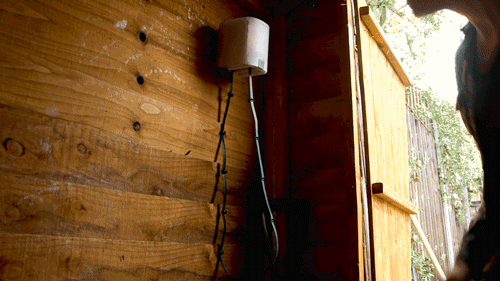 Remember the GravityLight? It’s an LED bulb powered by a bag full of rocks. To light it, someone lifts the bag using a cord on a pulley, then the bag slowly drops over 20 minutes turning a gear train that drives a motor to light the bulb. It’s human- (and gravity-) powered light.
Remember the GravityLight? It’s an LED bulb powered by a bag full of rocks. To light it, someone lifts the bag using a cord on a pulley, then the bag slowly drops over 20 minutes turning a gear train that drives a motor to light the bulb. It’s human- (and gravity-) powered light.
A prototype of the device emerged in November 2012 then quickly racked up nearly $400,000 in crowdfunding from donors all over the Internet. Then, two years later, an improved design returned to Indiegogo, the crowdfunding platform that hosted the light’s first success, and won another $400,000. The light sparked imaginations as a simple idea with the potential to change lives around the world.
While GravityLight was enjoying Internet fame, technology was rapidly evolving in African and Asian homes that constitute the light’s customer base. Mobile phones had become ubiquitous, and with them a need for charging batteries. Also, the cost of solar panels had plummeted. GravityLight was becoming obsolete. The technology had one advantage over solar, however, which was its ability to function in any weather and at night without the need for energy storage. Rather than scrap their concept, the folks at DeciWatt, the social enterprise behind GravityLight, responded to the challenges with a redesign. DeciWatt overhauled every part of the light and fully embraced solar power. It was a pivot that led to the NowLight.
“We needed a dramatic step-change in performance. But this was not feasible within the parameters of GravityLight: heavier weight, higher installation, and faster drop. So, we needed a complete product rethink,” says Caroline Angus, CEO of DeciWatt.
The new Nowlight enjoyed a successful crowdfunding run to earn $144,000 and is now in production. The light is optimized to require fewer pulls and more light: one minute of pulling generates three hours of light. A live power display shows the time remaining, and it adapts to the quantity of electricity being used. But Nowlight is not limited to human power. It can can also link to a solar panel or a grid-connected wall socket. Also, since mobile phone charging has become necessary in the emerging markets where Nowlight sells, the device includes a USB charging port.
“Despite the incredible coverage and support which we could continue to benefit from, we knew we could, and should, create a far better solution. And throughout the development of Nowlight we have involved users far earlier in prototype trials and embraced failing faster,” Ms. Angus says.
For more on Nowlight
Online: DeciWatt Global | Indiegogo campaign
E4C’s News: Coming soon
Okra’s Microgrid Without the Grid
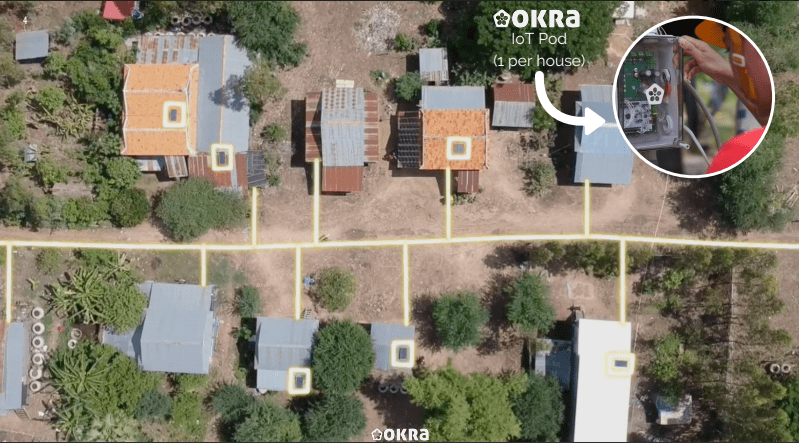
Okra is the vegetable that unites all the flavors in a good gumbo, and the startup that takes its name would like to do the same for microgrids in emerging economies. Okra the startup can turn off-the-shelf solar panels into an energy utility. Okra’s hardware and software packages manage the network, handling energy metering, mobile payments, maintenance and scaling, network updates and upgrades, all without the need to send a technician to the site. That final detail can be important because of the time it takes for technicians to travel to the sites where OKRA operates—it could be days in some remote communities.
With Okra’s services, solar panels can become a small (or large) business for entrepreneurs in Cambodia, where the startup now operates, or potentially anywhere else. It’s the “microgrid without the grid,” says Frank Bergh, a Contributing Editor at Engineering for Change and CEO of Beyond the Grid, PLLC. “These systems allow clusters of houses to build interconnected power systems without conventional grid infrastructure,” Mr. Bergh says.
Okra has stayed true to its vegetal monikers, naming its first prototype Pineapple Pod, and the follow-up in testing now is called Edamame. One hundred installations of Pineapple operate in the field, but Okra has curtailed their deployment, opting for the second generation, Edamame.
“We’ve stopped rollout of more of these Pineapple Pods as we’re conducting cost reduction, user experience improvement and are releasing a higher capacity final product (the Okra Edamame Pod) that we plan will be deployed to at least 10,000 households in 2019,” says Afnan Hannan, Okra’s Co-Founder and CEO.
The newest iteration can handle the heavy power loads needed to operate small industrial machines.
“The Edamame Pod builds on the lessons we learned from the first iteration Pineapple Pod and will be able to output 1.2kW of power vs. 250Wp (the limit of the Pineapple). The Edmame will have capacity to power loads all the way up to small-scale agroprocessing units such as rice mills and cassava graters, enabling off-grid communities to really become economic productivity hubs,” Mr. Hannan says.
Down the road, the system could allow load balancing and remote control features that allow a solar business owner to throttle the services available to delinquent accounts without cutting out their power completely. Households that are late on a payment may soon be able to continue to operate lights and charge phones until they are up to date on their bills.
“Energy companies and utilities will buy the Okra plug & play pod because it enables them to setup modular DC microgrids at about 1/3 the setup cost of traditional AC minigrids. This enables them to get a really attractive return on investment while enabling off-grid households to run productive lifestyles at a fraction of the cost and in a manner where the grid can grow with the communities needs over time,” Mr. Hannan says.
For more on Okra
Online: Okra Solar
PeopleTapp Enhances the Impact of Community Construction Programs
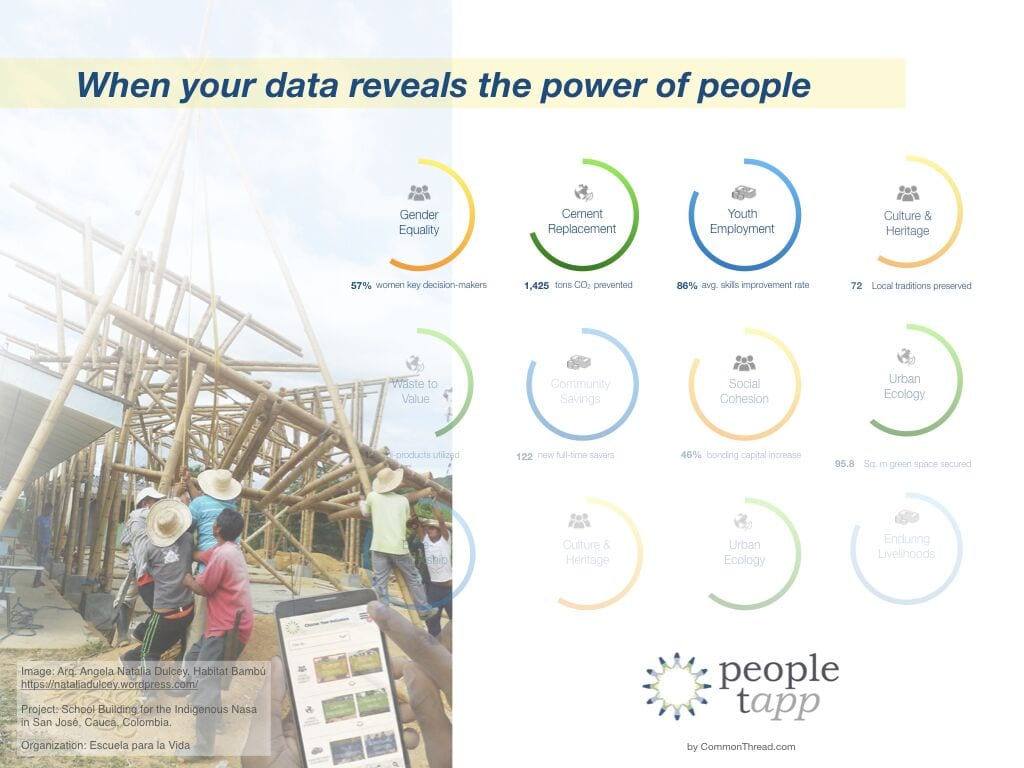 One of the hardest things to measure in global development is the impact that each effort is having. But knowing the impact is the highest priority to just about everyone involved, from financial backers to the people in the community intended to benefit from the work. Soon there may be a tool to improve how we measure impact in community-based building and infrastructure projects. A mobile application called PeopleTapp, in development now, may soon provide evidence of impact.
One of the hardest things to measure in global development is the impact that each effort is having. But knowing the impact is the highest priority to just about everyone involved, from financial backers to the people in the community intended to benefit from the work. Soon there may be a tool to improve how we measure impact in community-based building and infrastructure projects. A mobile application called PeopleTapp, in development now, may soon provide evidence of impact.
“PeopleTapp’s users (community-based organizations, NGOs, social impact designers) can see other practitioners’ projects nearby and build from and contribute to open data, helping stimulate localized collaboration. They also can choose from a menu of 18 indicators as appropriate for their project, and iterate as their project evolves and changes.” says Jason Moses, Contributing Editor at Engineering for Change and Founder of Common Thread, a social enterprise that supports community-based organizations in the world’s slums and other impoverished places. “Through this app we’re hoping to raise the impact level in each intervention, as well as generate mass localization and collectivized action. So it is not just an impact audit tool for one-off projects.”
The app can track activity and report in real time, gather opinions and survey the community, link to funders involved in the projects and promote the adoption of impact measurements as standard practice throughout the implementation of the project.
The prototype is accessible on TestFlight for Apple users and should be available on Android in early 2019.
For more on PeopleTapp
Online: commonthread.com
MaziwaPlus Cooling Systems prototype
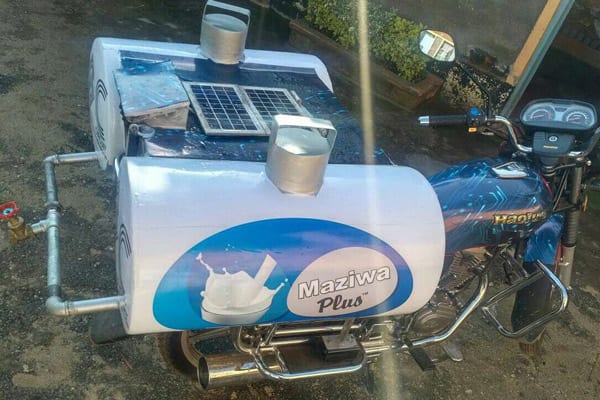 Selina Chepkoech hauls milk from her dairy farm by donkey and sometimes tractor over rough roads to the nearest chilling plant. She has lost 1200 liters of milk, she told the Kenyan news site the Daily Nation. Worldwide, about one pint of milk out of every six is lost to spoilage or other waste, according to research conducted at the University of Edinburgh in Scotland, the Guardian reports. In developing countries, farmers face problems like those that Ms. Chepkoech describes: spilled milk, milk that spoils before arriving at the factory, and poor record keeping that can make milk unsaleable or sell for less than the market price. A Kenyan startup called Savanna Circuit has a solution. EmmaStella Wangui and Percy Lemtukei partnered to create MaziwaPlus, a solar-powered milk cooling system attached to a motorcycle. The system controls the quality of the milk with a mobile application interface for farmers to adjust temperatures and see the status of their product in real time.
Selina Chepkoech hauls milk from her dairy farm by donkey and sometimes tractor over rough roads to the nearest chilling plant. She has lost 1200 liters of milk, she told the Kenyan news site the Daily Nation. Worldwide, about one pint of milk out of every six is lost to spoilage or other waste, according to research conducted at the University of Edinburgh in Scotland, the Guardian reports. In developing countries, farmers face problems like those that Ms. Chepkoech describes: spilled milk, milk that spoils before arriving at the factory, and poor record keeping that can make milk unsaleable or sell for less than the market price. A Kenyan startup called Savanna Circuit has a solution. EmmaStella Wangui and Percy Lemtukei partnered to create MaziwaPlus, a solar-powered milk cooling system attached to a motorcycle. The system controls the quality of the milk with a mobile application interface for farmers to adjust temperatures and see the status of their product in real time.
“It is a promising prototype because it is contributing to reducing the 35 percent of milk wasted or spoiled due to rejection at factory gates; spillage and lack of integration of small-holder dairy farmers in new milk traceability innovations,” says Sylvia Mukasa, Contributing Editor at Engineering for Change and CEO of GlobalX Investments Ltd, an IT Consulting firm in Nairobi, Kenya. Ms. Mukasa met Ms. Wangui while planning an Agri-Hack Workshop in 2018.
Savanna Circuit ran two pilots from November 2017 through April 2018. Now the team is working with four dairy cooperatives in Pokot South in rural Kenya, already having a positive impact on 1000 households, Ms. Mukasa says.
For more on MaziwaPlus
Online: sav-circuit.com
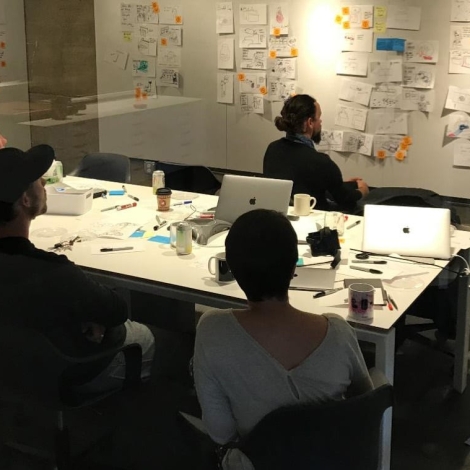

To Rob Goodier: This an invitation to join the group in IEEE Collabratec, that is developing the TRANSFORM! rewrite of switching power theory. TRANSFORM! includes the DC Transformer invention, and starts with household size DC solar systems, then will expand to DC Nanogrids that connect several households. We encourage published authors, and technicians with laboratory capability, to join us.